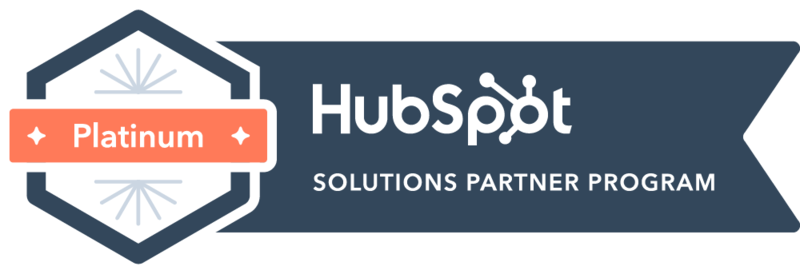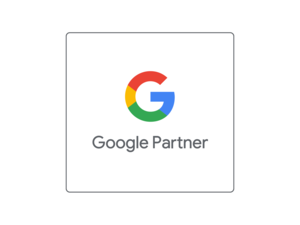
- Blog & Resources
- Blog
- Mastering LinkedIn: Lead generation strategies for B2B businesses
We’re not going to lie, at The Marketing Pod we love LinkedIn. There’s a sort of heroic, underdog charm to it that’s seen it rise above arguably more popular social networks like Facebook and X to cement itself as the go-to platform for professionals and, now, for B2B lead generation.
We can’t stress how essential LinkedIn has become for B2B. If we sound a bit obsessed with it, carry on reading to see why that’s completely justified.
Why LinkedIn?
With a network of more than 700 million professionals, LinkedIn provides unparalleled access to decision-makers across a variety of industries. For B2B marketers, mastering LinkedIn is key for driving business growth through building valuable connections and effectively engaging with potential clients.
In this blog, we’ve tapped the brains of some Pod experts, including our Business Manager, Carl Thomas, and members of our esteemed Digital team to pull together some LinkedIn lead generation strategies you absolutely should be doing.
LinkedIn stands out in the increasingly crowded world of social media as the network for professionals. As a result, it’s the go to in the B2B arena, attracting business owners, decision makers and employees.
Carl sums it up perfectly: “LinkedIn allows businesses to reach specific industries and decision-makers through advanced targeting options and Sales Navigator, fostering direct communication via InMail. Sharing engaging content and participating in niche groups builds brand authority and relationships, while a credible LinkedIn presence enhances trust.”
The platform’s data analytics and CRM integration enable refined strategies and efficient lead tracking. Additionally, opportunities for thought leadership and personal branding can attract leads who value industry expertise.
And, as a social network is only as good as its popularity (see: Google+), all this matters – because LinkedIn is where everyone is.
Getting started
Start by defining your target audience. This involves pinpointing the specific industries, job titles, company sizes, geographical locations and more of the businesses and decision makers you want to reach. LinkedIn's search filters, particularly those available through Sales Navigator, are indispensable for honing in on your ideal customer profile.
Define your ideal customer profile
Sales Navigator is a powerful tool that offers 36 lead and 16 account search filters, compared to LinkedIn basic search’s 18 filters. These filters ensure better automatic qualification of leads, which can then be saved on to custom lists. Alerts can also be set up to notify you of changes within particular companies or networks, enabling you to capitalise on new opportunities.
What is Sales Navigator and is it worth it?
Investing in LinkedIn Sales Navigator can significantly boost your lead generation efforts. The tool’s advanced search filters, custom lists, and alerts are invaluable for identifying and tracking high-value leads. Additionally, the InMail feature allows you to initiate conversations directly with prospects, while the TeamLink feature helps identify warm introductions through your network.
Optimise your profile
Your LinkedIn profile and company page are your digital front doors. In fact, as so many people are likely to find you on LinkedIn very early on in their customer journey, it might even be their first impression of you and your organisation. So, it’s crucial to make sure your and your company’s pages are fully optimised by including professional photos and detailed descriptions showcasing your expertise. Here’s a quick checklist:
-
Professional profile and cover images: Use high-quality images that reflect your brand identity. It goes without saying but don’t just crop your face out of a recent holiday pic. Please.
-
Compelling headline and summary: Highlight your value proposition and expertise.
-
Detailed experience and credentials: List relevant roles and achievements.
-
Keywords: Incorporate relevant keywords to enhance search visibility.
-
Regular updates: Keep your company page updated with fresh content.
Research your audience and develop a content strategy
Identify target companies and decision makers within your sector. LinkedIn Sales Navigator can help you create lists of leads and accounts that match your ideal customer profile. As with audience research, you might be tempted to skip this step, but it will really help with the next steps.
And the first of those is creating a content strategy. On LinkedIn, content is King. A well planned content strategy can establish you as a thought leader and attract potential leads. Here’s how to develop an effective content plan:
-
Share industry insights: Post articles, whitepapers and blog posts that provide valuable insights into your industry.
-
Case studies: Highlight your success stories and the value you provided to clients.
-
Engaging media: Use infographics and videos to present complex information in an easily digestible format.
-
Thought leadership: Publish pieces on industry trends and best practices to position yourself as an authority.
Engaging and building connections
Remember doing this before LinkedIn? Spending time and money with no guarantee of success? Even if we still don’t have that guarantee, building meaningful relationships is at the core of LinkedIn’s lead generation capabilities and allows you to maximise your chances of success. Start by sending personalised connection requests and InMail messages to your identified leads. Here are some strategies to enhance engagement:
-
Personalised outreach: Tailor your messages to address the recipient’s specific needs and interests.
-
Content interaction: Engage with your leads’ content by liking, commenting and sharing their posts.
-
LinkedIn groups: Join and participate in groups relevant to your industry. Share insights and engage in discussions to build your credibility.
Regular activity: Maintain a consistent presence by posting updates and interacting with your network regularly.
Running targeted ads
LinkedIn's advertising options enable precise targeting, ensuring your content reaches the right audience. Explore the following ad formats:
- Sponsored content: Promote your posts, offers, and events directly in the LinkedIn feed.
- Sponsored InMail: Send personalised messages to your prospects’ inboxes.
- Display and dynamic ads: Increase brand visibility with visually engaging ads.
Monitoring and analysing performance
Like with anything else you do in B2B marketing, regularly reviewing your LinkedIn analytics is crucial for tracking engagement and measuring the success of your content and campaigns. Key metrics to monitor include profile views, connection requests, content engagement, and lead conversions. Use these insights to refine your strategies and improve your results over time.
Take your LinkedIn journey further
Doing all of the above will set you on a great path, but the more you put into LinkedIn, the more you’ll get out of it. Here are some ways you can continue to make sure it delivers for your B2B marketing strategy.
CRM integration: If your tech stack supports it, integrating LinkedIn with your CRM system can streamline lead tracking and follow-up processes. This integration ensures all interactions are logged, providing a comprehensive view of your relationships and campaign ROI.
Follow up strategy: Develop a consistent follow up strategy to nurture leads. Use a mix of LinkedIn messages, emails and even phone calls to stay top of mind. Personalised communication is key to maintaining relationships and moving leads through the sales funnel.
Consistent content posting: Maintaining a regular posting schedule keeps your audience engaged and informed about your expertise and offerings. Share valuable content, including articles, videos and updates, to build your brand presence and establish yourself as a thought leader.
Measure and iterate: Continuously measure the performance of your LinkedIn lead generation activities and don’t be afraid to make adjustments as needed. Use insights from your analytics to refine your approach, test different strategies and improve your results over time.
A goldmine of opportunities
LinkedIn offers a goldmine of opportunities for B2B lead generation. By optimising your profile, engaging with your target audience, making use of powerful tools like Sales Navigator and consistently delivering valuable content, you can establish your brand as a trusted authority and generate high-quality leads that drive business growth.
Carl adds: “Refining your strategies and consistently measuring performance will ensure your LinkedIn efforts yield the best possible results.”
Don’t be under any illusions, mastering LinkedIn isn’t just about updating your network now and then, it is an ongoing process. But with the right approach and tools, it can become your most effective platform for B2B lead generation. And the good news? Our Digital team can help you get it right so you can watch your network, and your business, grow. Contact us today to find out more.

Emma Thompson
Anything Emma doesn't know about digital campaigns probably isn't worth knowing. Always approachable and ready to help, Emma joined the team during lockdown and immediately impressed everyone with her resilience, resourcefulness and ability to look fresh on early morning Hangouts.
You might also be interested in…


Build B2B trust and credibility through people with HubSpot



 William Tomaney
William Tomaney
 Alexander Costello
Alexander Costello
 Emma Crofts
Emma Crofts






.png)


